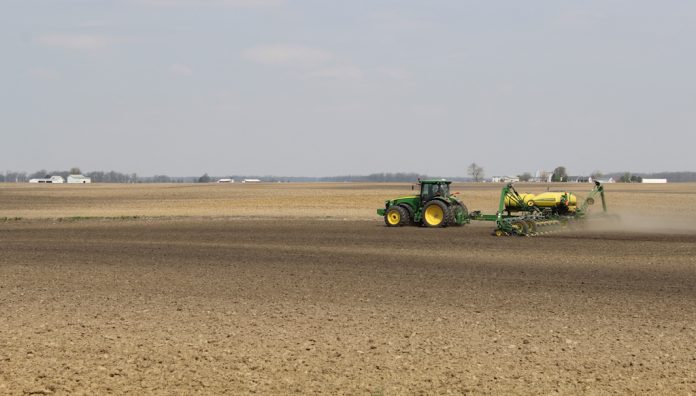Scripture says the farmer must plant with hope. Looking around, it seems like hope is a little bit in short supply.
In its place, the farmer is planting out of habit. The machinery is getting ready, we have had a couple of warm days; it is 70 degrees in some parts of the Midwest, and some corn and beans are already in the ground.
Dry ground
The beaver dams up water because he cannot stand the sound of running water. The farmer plants because the ground got dry. It didn’t last year, and there is a lot of pent-up energy to not waste any time while it is dry.
I told the participants of our Midwest conference call April 6 that we had a dry week and spring weather, but no fieldwork. So, wouldn’t you know that April 7 I saw dry fertilizer tenders and even a spray rig going out of Andover from the local Centerra facility. Either I was wrong, or I was just a day early.
Farmers who sat and watched it rain last year want to do anything they can, even if actual planting in northeast Ohio usually waits until April 20 or so.
Hope lacking
So, the work has started, but hope is lacking, as we made new contract lows on all corn futures contracts last week. Predictions from some sources have corn acres dropping because of the price compared to soybeans, but the USDA reports March 31 did not agree.
Uncle Sugar says American farmers will plant 97 million acres of corn. The trade expected a little over 94 million acres. Last year we planted 89.7 million, so what is the increase for? I accept the idea that the observers think acres increase, I just don’t know why.
Corn is expensive to grow and is horribly cheap. The acres must come from a return to the traditional rotation, or from some amazing optimism that corn prices will get better.
I am being told that sorghum acres are increasing in some states, as China has been aggressive in buying this commodity, and the price has been strong for that reason. A few more exported tons go a long way to help the price of a crop that does not store huge quantities of product. I have been preaching better prices, but the calendar moves north and the prices move south.
Everything against corn
We seem to have everything against corn prices now. All markets are depressed from the combination of the coronavirus disaster and the Saudi-Russian oil war that has depressed the price of crude.
As we have discussed in this space previously, the virus has cut gasoline consumption, which cuts ethanol demand, which cuts corn demand. Add to the drop in demand of the ethanol market for corn, the current livestock dynamics.
Livestock are backed up in the supply chain as processors are struggling to keep plants open. It has been widely reported that Tyson Foods closed their Columbus Junction, Iowa, processing plant because of 24 cases of COVID-19.
Other plants are struggling to remain open as labor demands personnel separation to maintain social distance. Since plants cannot be re-configured on a whim, this is creating problems that will not be solved easily.
As a result, livestock prices are dropping. Weaker livestock prices eventually means less feed demand, but it takes a while because of the long livestock lifecycle.
Dairy struggles
Other commodities are also struggling. For some reason, milk is in oversupply and is being dumped in some markets. I frankly am amazed at this. Locally shelves were empty of United Dairy products yesterday, and I don’t know why. It would seem, that as the populace is told to shop once a week, they would load up on milk and cheese and yogurt. What am I missing?
Can the world live on hoarded toilet paper? Or are people holed up at home and not going out for ice cream?
While USDA reported a planting intention of 97 million acres of corn, they reported a more believable 83.5 million acres of soybeans. This is sharply higher than the 76.1 of last year, but there is a problem with the math.
Is it possible to raise this much more corn and this much more soybeans? Where do the acres come from? The easy answer is out of cheap cotton acres, but it is hard to believe we can increase total acres this much.













